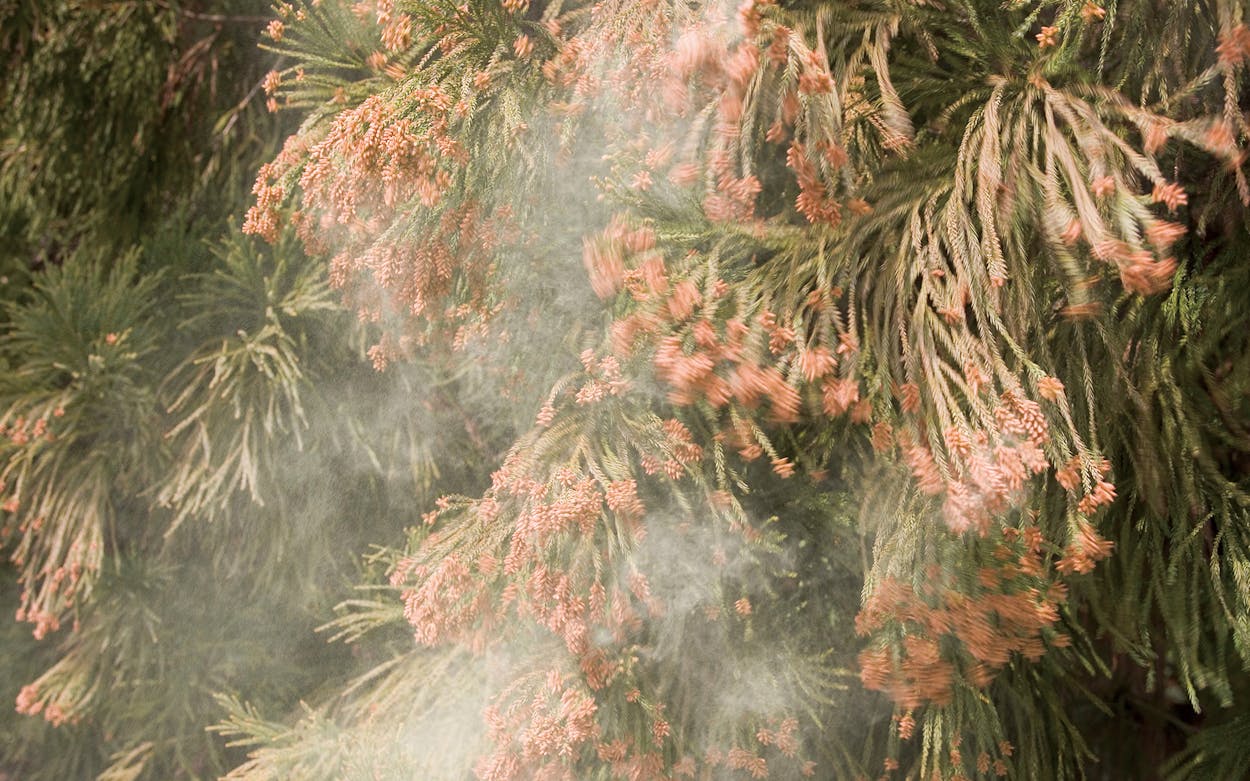Cedar fever: It’s the scourge of Central Texas, a tiny beast that hides out in your nostrils and makes the mild winter weather threaten to devour your sense of peace on earth and good will toward your fellow man. You sneeze, your eyes itch, and your throat closes up as you sniffle through all of January and maybe February too. People who moved to Austin and the surrounding areas from elsewhere, lured to the Lone Star State by plentiful barbecue, rivers of queso, and a reasonably low cost-of-living, may find the sudden onset of a vicious cedar allergy to be nature’s cruel trick on Texas transplants.
It doesn’t always strike everyone, of course, but this winter’s edition of cedar season looks to be a brutal one. That’s the takeaway from weather experts who note that the warm, wet fall that struck Central Texas in 2017 has primed trees to produce a savage amount of pollen. As KXAN reports:
Cedar season is typically the third week in December through the end of February, but this year, Dr. [Robert] Cook [of Central Texas Allergy & Asthma] says the season could be mid-December all the way through the first week of March. Male cedar trees — technically ashe junipers — produce pollen on the ends of their branches that turns brown and cone-like when they’re mature. One good cold snap will open the cones and let the yellow pollen be dispersed by the wind. On windy days, clouds of cedar pollen are a common sight in this area.
During the height of cedar season, it’s normal to see 5,000-10,000 cedar grains per cubic meter of air. Dr. Cook believes numbers this year will be on the high side, possibly in the low 10,000s. It is possible for numbers to go as high as 60,000, but that would be very rare.
In other words, according to Cook, the pollen count this year could be six to twelve times worse than an average year, and last weeks longer than usual. And the increased count won’t just affect those with known cedar allergies. The amount of pollen in the air in recent years means that everybody’s exposure to it is up—even if they don’t live in Central Texas. “Having such a bad cedar season, then there might be more people becoming allergic to cedar, because they’ll have had higher exposure to it,” Douglas Barstow. a doctor with Allergy & Asthma Associates, told KXAN.
But where did all of this sneeze-inducing Texas cedar come from? You can thank your barbecue-loving grandparents.
According to NPR, Central Texas’s cedar explosions come from livestock overgrazing grass around the turn of the nineteenth century, which gave the cedar trees (also known as juniper) the opportunity to thrive without competition.
When Europeans moved into the area, grass steadily declined in exchange for juniper scrubland. Grassland Ecologist at the University of Texas at San Antonio, Dr. Oscar Van Auken, sums up the process in a 2008 study: “The prime cause of the current and recent encroachment [of woody shrubs like juniper] appears to be high and constant levels of grass herbivory by domestic animals.” That’s fancy science talk to say that cattle, sheep — and now goats — in the Hill Country have steadily eaten up all the grass, eliminating juniper’s competition in the area.
Resolving the issue has been a longstanding challenge for Central Texans. In 1997, Joe Nick Patoski wrote in Texas Monthly about the personal struggle he had with cedar on his land—and the resulting exploration of what can be done about it led him to ultimately yield the battle and accept that he’d have to live in red-eyed harmony with his sniffle-inducing foe. In a year like this one, surrender to the elemental forces of cedar may be the only solution.








